Kitchen Sink
Cannabinoid THC Dominant
THC 19.5 - 23%
CBD 0.32 - 0.54%
Effect Relaxed
Side Effect Slurred speech
Flavor Spicyherbal
Kitchen Sink Strain - So, What Taste To Expect From It?
THC
CBD
Potency
Created by Connarado Genetics, the Kitchen Sink strain is a hybrid one. It was developed by combining parent strains Sundae Driver and GMO Cookies. This is a balanced hybrid and provides energizing effects. With an average THC content of 19-23%, it's a great weed to smoke during the day or whenever you want to feel elevated and inspired without getting knocked down too hard.
Effects and Uses of Kitchen Sink Cultivar
This cannabis strain provides the best of both worlds. It gives users some much-needed physical relaxation while leaving the brain functional and active. Users report feeling happy and focused when they smoke these buds. It also envelopes them in the sense of euphoria and gives them a boost of energy to take on their day.With a low to moderate THC content, this weed may also be smoked by beginners. However, it should be consumed in smaller quantities by new smokers as it can have strong effects which may become too much to handle for some.
Due to the sense of upliftment it provides, Kitchen Sink weed is helpful for those suffering from issues like depression or stress.
Kitchen Sink Strain Taste and Aroma
If you prefer to smoke sweet-tasting weeds, this one is it for you. It has a very sweet taste that will remind you of having dessert. The aroma has flowery tones that smell almost creamy. It's a very relaxing scent that can easily fill up a room with sweet goodness. The smoke has a very strong vanilla taste that is combined with nutty undertones. On the exhale, there is a combination of spicy and fruity notes. The overall aroma and flavor profiles of this marijuana are very pleasant if you have a sweet tooth.
Information for Growers
If you're interested in growing Kitchen Sink strain, you would need a little experience as its branches need to be controlled during vegetation. It can be cultivated both indoors and outdoors from its feminized seeds. In about 72-77 days, you will start to smell the sweetness associated with this weed as the buds start to be produced. Its flowering time is above average, but the taste and effects of this cannabis make it worthwhile.
Side Effects
Simply let us know how this strain tastes or write a detailed review.
Kitchen Sink Strain Cannabinoids
| THC | Tetrahydrocannabinol, or THC, is a major cannabis chemical compound. It is a psychoactive element that stimulates dopamine release and induces euphoria or happiness. THC-rich strains may be helpful with such conditions as lack of appetite, chronic pains , etc. It is considered to be the primary active marijuana component. | 19.5 - 23% |
| CBD | Cannabidiol, or CBD, is a major compound in cannabis, which is non-psychoactive. It is also proved to counteract the side effects of the second major component THC. CBD is widely used for medicinal purposes in rubs, oils and so on. It is helpful in muscle pain cases, may treat arthritis and migraines. Even Greeks used it against pain, while Queen Victoria applied it to get rid of menstrual cramps. | 0.32 - 0.54% |
| CBC | Cannabichromene, or CBC, is a minor cannabinoid, meaning that its quantity in cannabis is quite little. Though it has the same origin as CBD and THC, it is different in functions. Without any psychoactive effects, it is an efficient cannabis compound in combating acne and depression. CBC produces analgesic, antibacterial and anti-inflammatory effects. | 0.14 - 0.29% |
| CBG | Cannabigerol, or CBG, is one of the minor cannabis compounds in adult plants. On the other hand, young ones contain a lot of this antibacterial and anti-inflammatory component. During the growth, CBG is converted into different cannabinoids, mostly THC and CBD. The compound itself increases appetite and decreases eye pressure. | 0.06 - 0.23% |
| CBN | Cannabinol, or CBN, is a trace element in cannabis that is considered to be mildly psychoactive. It appears from oxidation THC, exposed to light and heat. CBN is mostly contained in old cannabis and in traditional hashish. It is effective against insomnia, bacterial infections and appetite loss. | 0.04 - 0.21% |
| THCV | Tetrahydrocannabivarin, or THC-V, is a compound contained in cannabis in trace amounts. Even though it is close to THC molecularly, it is different in effects. This compound may be psychoactive only in large amounts. THC-V reduces blood sugar, controls appetite, stimulates bone growth, etc. African Sativa strains are the richest in THC-V. | 0.08 - 0.21% |
Kitchen Sink Terpene Profile
| Myrcene | Myrcene (also known as β-myrcene) is one of the most common terpenes found in cannabis, representing more than 20% of the modern marijuana terpene profile. Myrcene has a distinct earthy, musky flavor, resembling cloves. It is responsible for calming and soothing effects of weed. Myrcene is also found in hops, thyme, mango, lemongrass, guava melon. | 0.26% |
| Humulene | Humulene (also known as α-humulene) is one of the major terpenes found in cannabis, contributing to woody, earthy, spicy, herbaceous, and, mainly, floral aromas of cannabis. Used in modern medicine, humulene offers anti-inflammatory, antibacterial, and appetite suppressant effects, which have been well-researched by pharmaceutical companies. | 0.17% |
| Bisabolol | Bisabolol (also known as α-Bisabolol or levomenol) is a lesser-known terpene found in cannabis. It contributes to anti-inflammatory, anti-irritant, antioxidant, anti-microbial, and analgesic properties of weed strains containing bisanol. Attentive smokers would be able to catch a nutty, fruity scent with herbal and floral undertones, with a tender trace of coconut. | 0.19% |
| Terpineol | Terpineol (also known as alpha-terpineol or a-terpineol) is a terpene naturally occurring in more than 150 plants, including lilacs, lime blossoms, eucalyptus sap, and pines. Among the therapeutic qualities are anti-inflammatory, antioxidant, antitumor, and antimicrobial. In cannabis, terpineol boasts the distinctive pine smoke aroma and causes a relaxing, sedative effect. | 0.19% |
| Phellandrene | Phellandrene (also known as alpha- and beta-phellandrene) is one of the rare terpenes found in cannabis with antihyperalgesic and antidepressive properties. Phellandrene contributes to a minty, woody, and mildly citrus aroma in cannabis. Previously confused with limonene and pinene, phellandrene was eventually distinguished as a separate terpene common for eucalyptus. Also, it could be found in mint, dill, black pepper, cinnamon, parsley, pine, and lavender. | 0.19% |
| Total terpenes content | 1.00% |
Growing Info
Similar Strains
THC 15 - 18%
CBD 0.03 - 1.02%
Effect Giggly
Flavor Grape
THC 22.58 - 24.92%
CBD 0.4 - 0.69%
Effect Relaxed
Flavor Berry
THC 12 - 15.5%
CBD 12.61 - 12.94%
Effect Happy
Flavor Spicyherbal
THC 13 - 17.88%
CBD 0.04 - 0.28%
Effect Uplifted
Flavor Peach

THC 16.23 - 18.14%
CBD 0.36 - 0.95%
Effect Uplifted
Flavor Tea
THC 10.5 - 12.5%
CBD 0.04 - 0.48%
Effect Concentrated
Flavor Woody
THC 20 - 27.5%
CBD 0.29 - 0.78%
Effect Tingly
Flavor Lime
THC 15 - 16%
CBD 1.12 - 1.24%
Effect Sleepy
Flavor Pineapple
THC 16.67 - 20.67%
CBD 0.28 - 0.59%
Effect Euphoric
Flavor Spicyherbal
THC 21 - 23%
CBD 0.62 - 0.81%
Effect Nausea
Flavor Grape
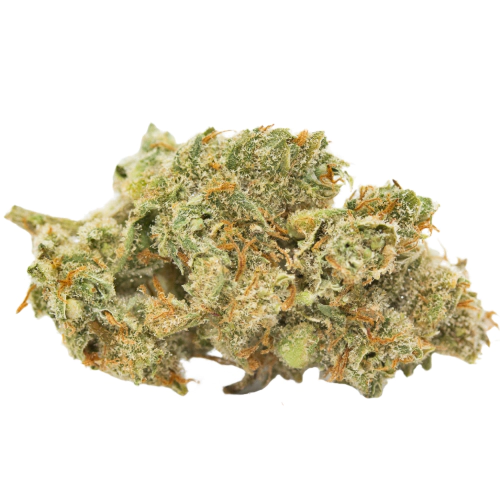

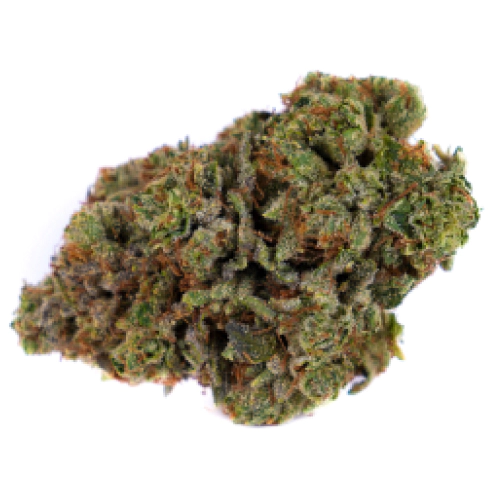
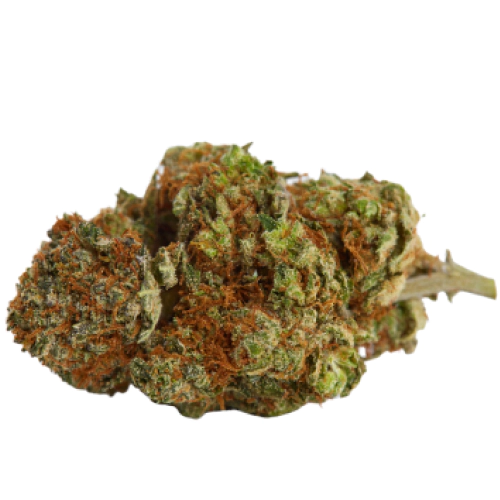
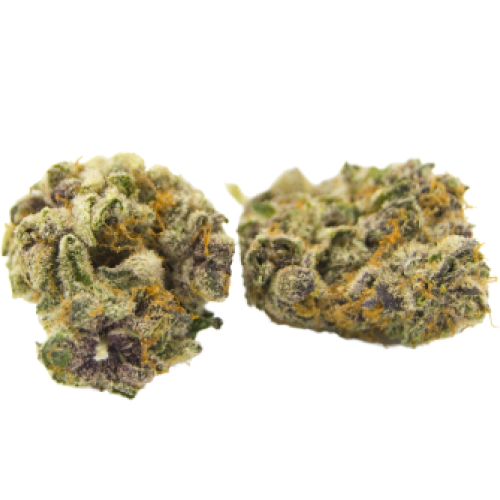
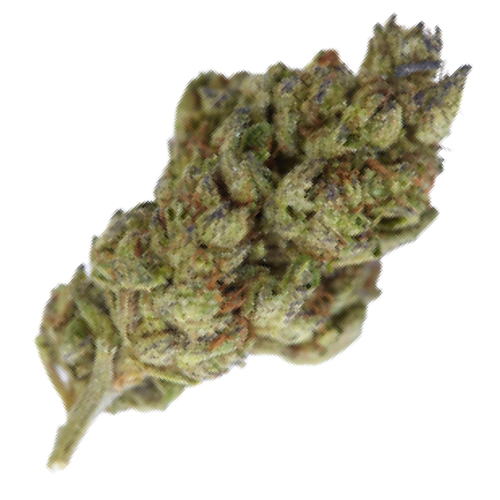

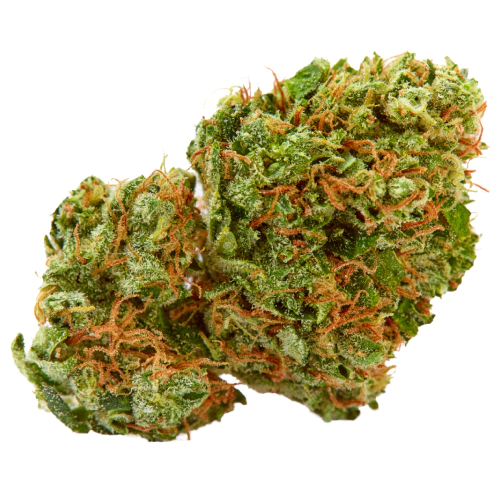
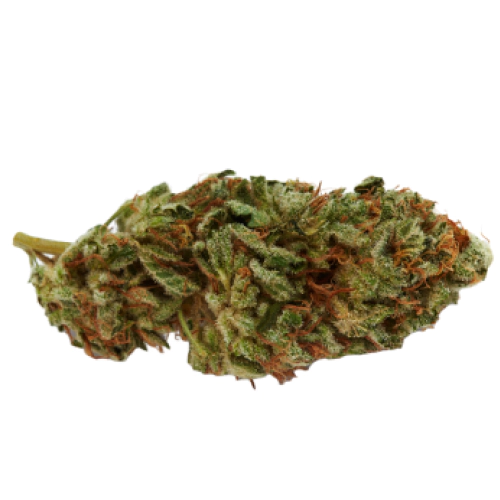

Be the first and share your opinion
Write a Review